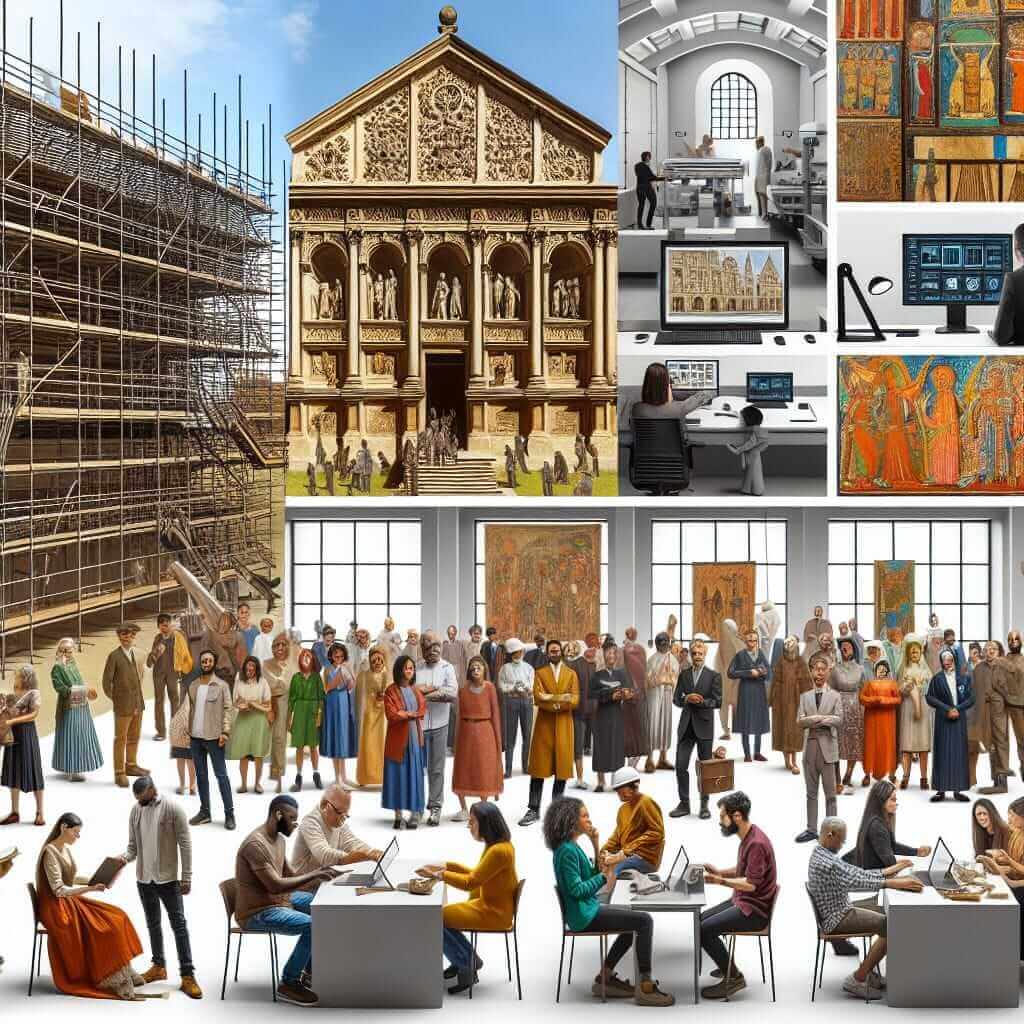In the IELTS Reading section, several intriguing topics are frequently explored; one such topic is “Cultural Heritage Preservation Methods.” This subject often appears in the test due to its pertinence and depth. Understanding both the content and typical question types related to this subject can be highly beneficial for test-takers. In this article, we’ll delve into this topic, provide a sample reading passage, questions, and thorough solutions to aid your preparation.
Understanding the IELTS Reading Test
The IELTS Reading test is designed to assess a range of reading skills, including your ability to identify specific details, understand the main ideas, recognize the writer’s opinions or intentions, and deduce meanings from context. Reading passages and questions are often linked to real-life issues, making them both relevant and engaging.
Sample Reading Passage on “Cultural Heritage Preservation Methods”
Easy Text: Preserving Cultural Heritage
Cultural heritage preservation remains a pivotal aspect of modern society, ensuring that the historical and cultural legacy of a community is maintained for future generations. Various methods have been implemented globally to safeguard heritage sites and practices.
One prominent method is physical conservation, which involves restoring and maintaining historical buildings, monuments, and artifacts. This process often requires skilled craftsmanship and significant financial investment. Another successful approach is the digitization of cultural heritage, which includes creating digital records of artifacts, documents, and practices. This not only protects the originals but also makes the heritage accessible to a wider audience through digital platforms.
Community involvement plays a crucial role in cultural preservation. By engaging local communities in preservation efforts, a deeper sense of ownership and respect for the heritage is fostered. Educational programs and awareness campaigns further enhance public understanding and participation in preservation activities.
Furthermore, legal frameworks and international cooperation are essential. Laws that protect heritage sites and artifacts from illegal trade and destruction, coupled with international agreements, help to safeguard cultural heritage on a global scale. Organizations like UNESCO play a pivotal role in these efforts.

Questions: Comprehension and Analysis
Questions Based on the Passage
-
Multiple Choice: According to the passage, what is one of the benefits of digitizing cultural heritage?
- A. It is cheaper than physical conservation.
- B. It makes heritage accessible to a wider audience.
- C. It eliminates the need for financial investment.
- D. It replaces the need for skilled craftsmanship.
-
True/False/Not Given: Educational programs and awareness campaigns have no impact on public participation in cultural preservation efforts.
-
Matching Information: Match each method of cultural heritage preservation to its corresponding description.
-
- Physical conservation
-
- Digitization
-
- Community involvement
-
- Legal frameworks
- A. Protects heritage through laws and international cooperation.
- B. Involves local communities to foster respect and ownership.
- C. Restores and maintains historical buildings and artifacts.
- D. Creates digital records to increase accessibility.
-
-
Summary Completion: Complete the following summary using words from the passage.
- Various methods ensure the of cultural heritage. Among these, physical conservation requires skilled craftsmanship, whereas creates digital records. Involving in preservation efforts is crucial, as is establishing to protect heritage sites globally.
Answer Key and Explanations
-
Multiple Choice Answer: B. It makes heritage accessible to a wider audience.
- Explanation: The passage explicitly states that digitization not only protects the originals but also makes the heritage accessible to more people via digital platforms.
-
True/False/Not Given Answer: False.
- Explanation: The passage mentions that educational programs and awareness campaigns enhance public understanding and participation in preservation activities, implying a positive impact.
-
Matching Information Answers:
- 1 – C
- 2 – D
- 3 – B
- 4 – A
- Explanation: Each method and its description are clearly matched based on the details provided in the passage.
-
Summary Completion Answers:
- conservation
- digitization
- local communities
- legal frameworks
- Explanation: These terms are clearly mentioned in the passage and fit logically into the summary.
Common Mistakes and Tips
Common Mistakes
- Skimming Too Quickly: Not reading carefully enough can lead to missing important details necessary for answering questions.
- Misinterpreting Information: Failing to differentiate between the writer’s opinions and factual information.
- Ignoring Context: Not considering the context in which certain information is presented can lead to incorrect answers.
Tips for Avoiding Mistakes
- Practice Active Reading: Engage with the text by noting down main ideas and details.
- Understand Question Types: Familiarize yourself with different question formats used in the IELTS Reading section.
- Expand Your Vocabulary: Regularly learn and review new words related to common IELTS topics.
Useful Vocabulary Words
- Preservation (noun) /ˌprez.ərˈveɪ.ʃən/: the act of maintaining something in its original state.
- Digitization (noun) /ˌdɪdʒ.ə.taɪˈzeɪ.ʃən/: the process of converting information into a digital format.
- Craftsmanship (noun) /ˈkrɑːfts.mən.ʃɪp/: skill at creating something in a particular manual craft.
- Accessible (adjective) /əkˈses.ə.bəl/: easy to obtain or use.
- Frameworks (noun) /ˈfreɪm.wɜːks/: a system of rules, ideas, or beliefs used to plan or decide something.
Grammar Focus: Complex Sentences
Definition: A complex sentence consists of a main clause (independent clause) and one or more subordinate clauses (dependent clauses).
Formula: Main Clause + Subordinate Clause, or Subordinate Clause + Main Clause
Example: “Although restoring historical buildings requires significant financial investment, it is essential for cultural heritage preservation.”
- Explanation: The subordinate clause “Although restoring historical buildings requires significant financial investment” adds context to the main clause “it is essential for cultural heritage preservation” and is crucial for a full understanding of the sentence.
Final Advice
To excel in the IELTS Reading section, practicing with a variety of texts is vital. Engage with topics relevant to contemporary issues, such as cultural heritage preservation methods. By honing your reading strategies, expanding your vocabulary, and understanding different question types, you can significantly improve your performance and achieve a high score.
Remember, consistency is key—dedicate regular time to reading practice, and you’ll see improvement over time. Good luck!